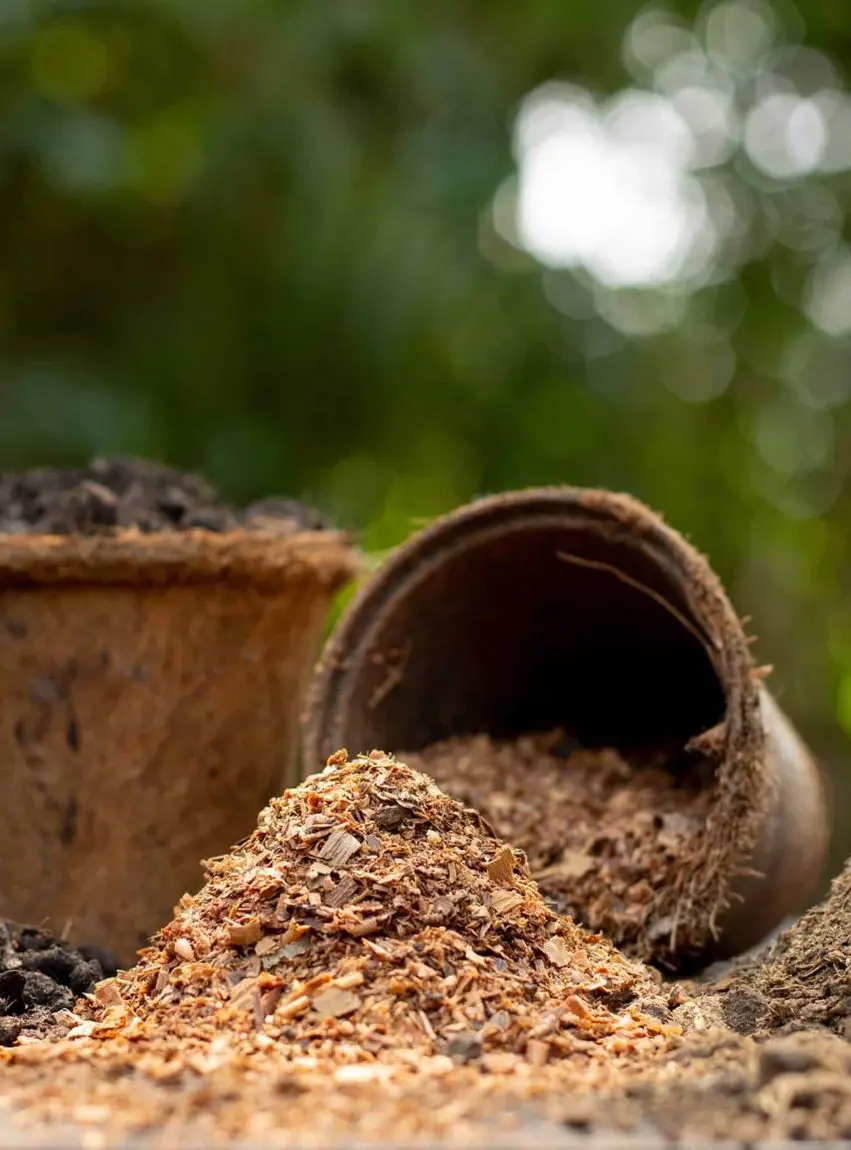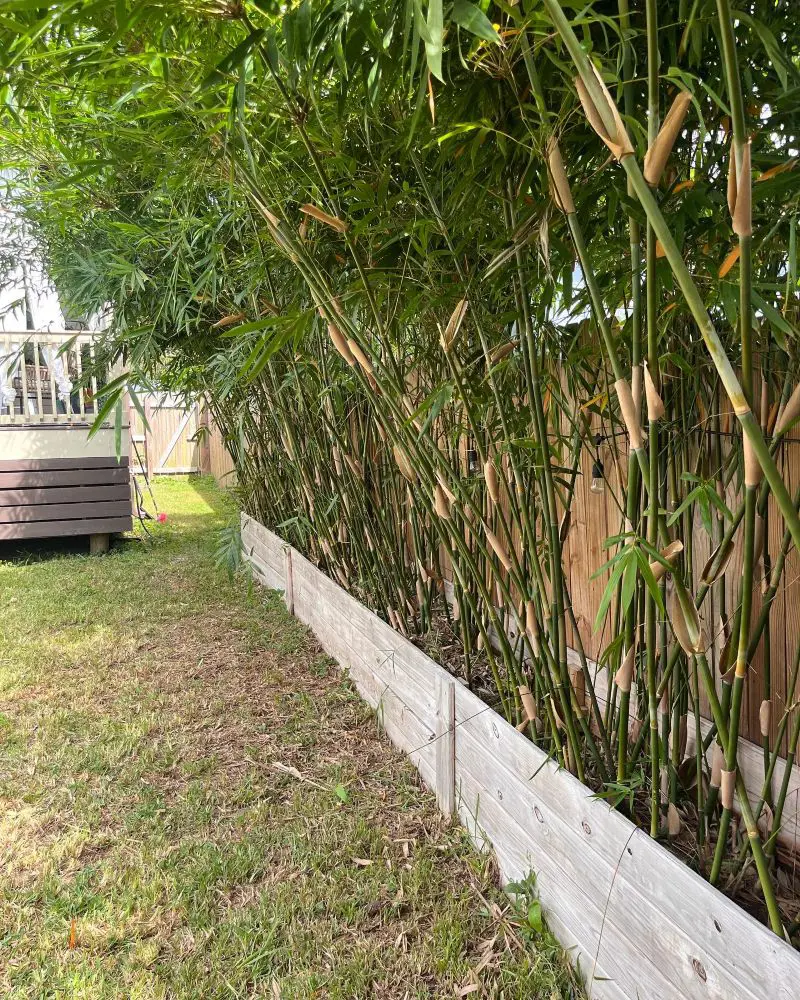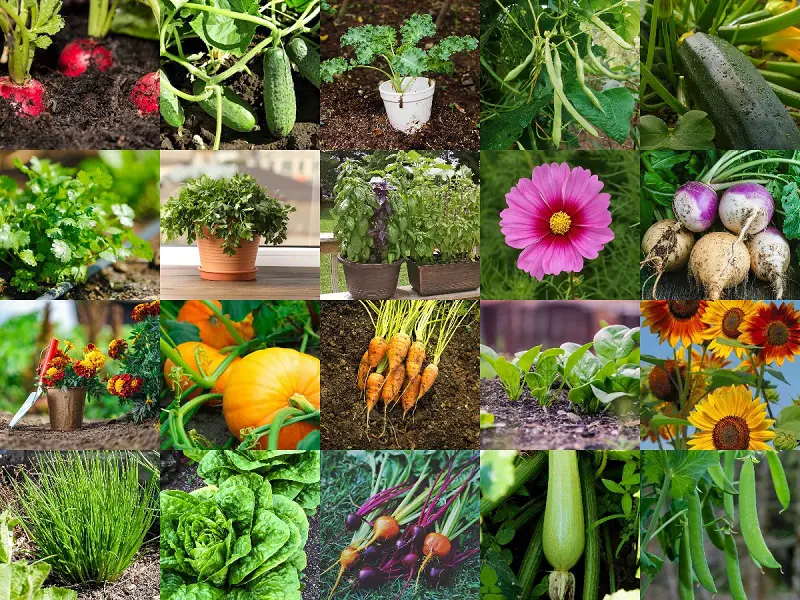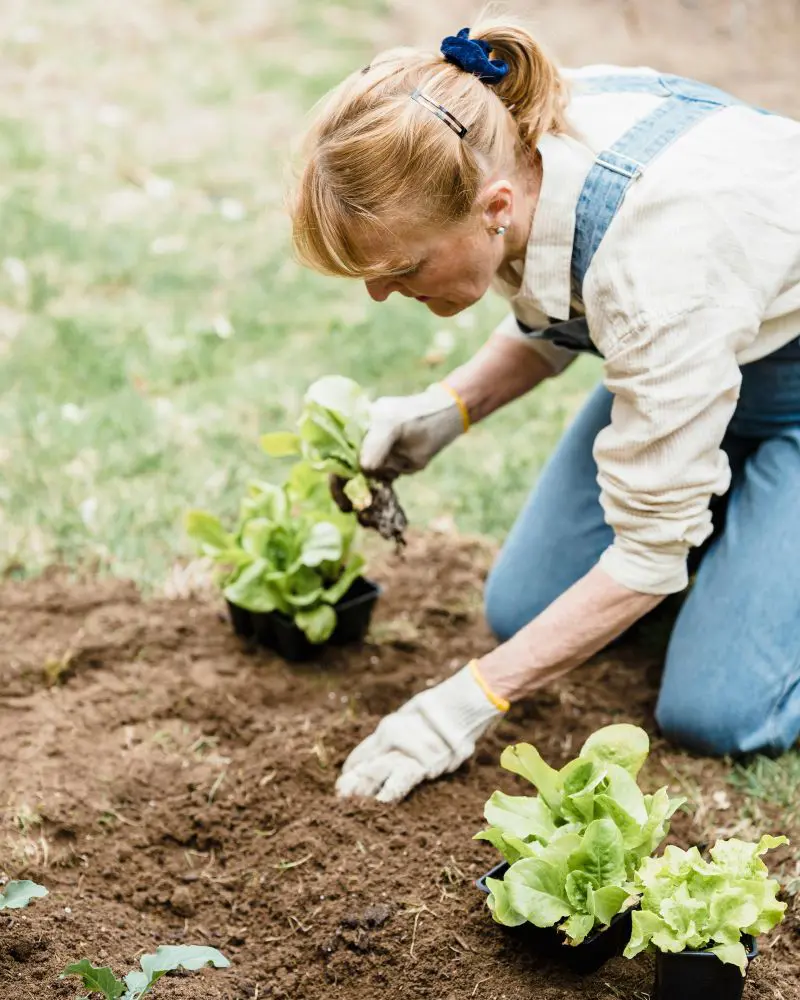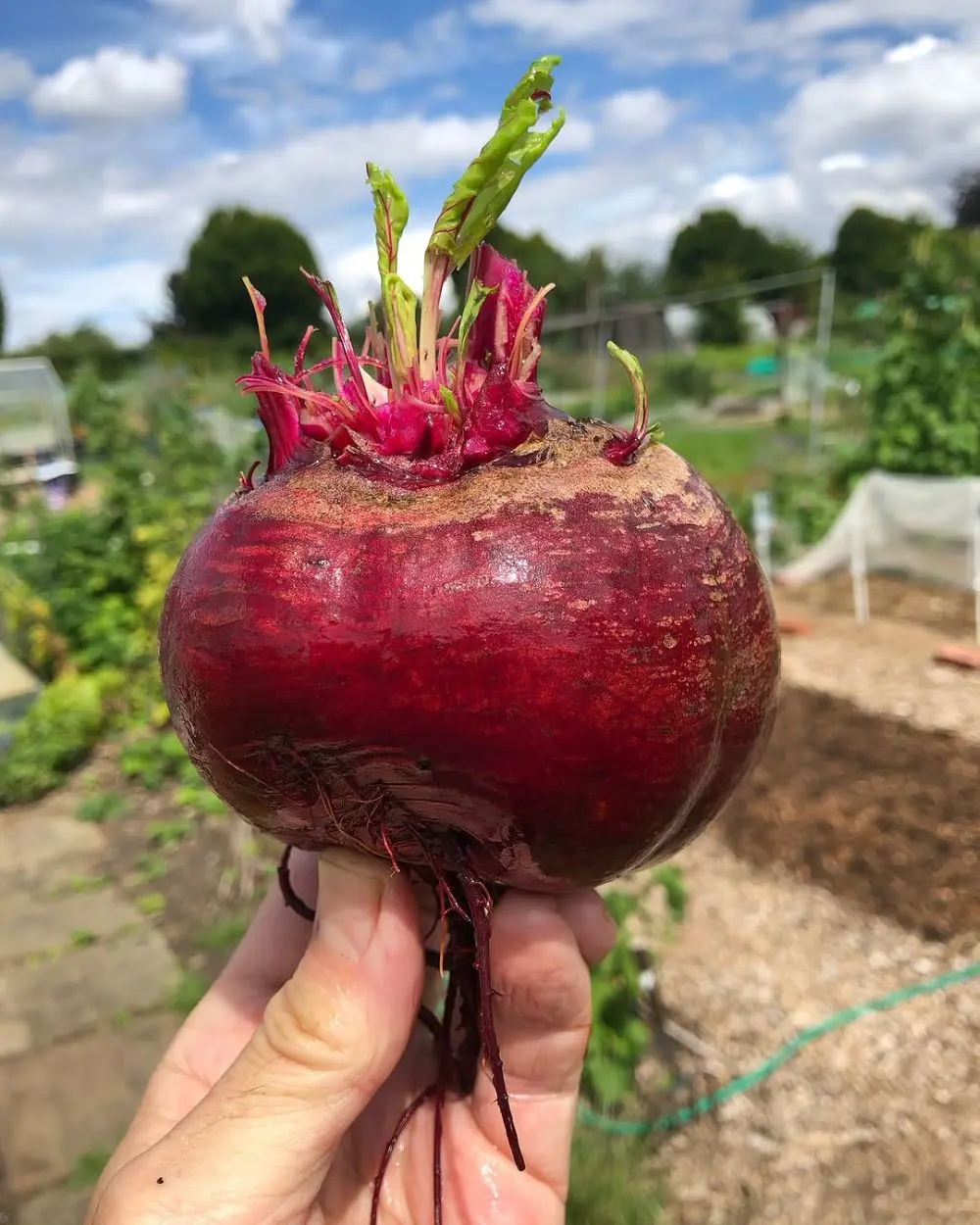Bone meal is a popular organic fertilizer, known for its high phosphorus content and its ability to improve the health and growth of plants.
This article will delve into what bone meal fertilizer is, how to use it effectively, its benefits and disadvantages, and the best times to apply it. We'll also explore how you can make your bone meal fertilizer at home.
What Is Bone Meal Fertilizer?
Bone meal is a finely ground powder made from animal bones, typically from cattle. It is rich in essential nutrients, particularly phosphorus (P) and calcium (Ca), and also contains a modest amount of nitrogen (N).
These nutrients are vital for plant growth, aiding in root development, flowering, and fruiting. Bone meal is considered a slow-release fertilizer, meaning it releases its nutrients over time, providing a steady supply of essential minerals to plants.
Making Bone Meal Fertilizer
Making your bone meal fertilizer at home is a great way to recycle kitchen waste and create a nutrient-rich fertilizer for your garden. Here’s how you can do it:
- Collect Bones: Gather bones from your kitchen, such as chicken, beef, or pork bones. Avoid using bones with a lot of fat or meat attached.
Clean and Dry the Bones: Boil the bones to remove any remaining meat and fat. Then, let them dry completely. This can be done by air drying or baking in the oven at a low temperature. - Crush the Bones: Once the bones are dry, crush them into small pieces using a hammer or heavy-duty blender. The goal is to break them down into smaller, more manageable pieces.
- Grind the Bones: Use a grinder or food processor to grind the bones into a fine powder. This may take several passes to achieve the desired consistency.
- Store the Bone Meal: Store the finished bone meal in an airtight container. Keep it in a cool, dry place until you’re ready to use it.
- Application: Use your homemade bone meal just like a store-bought bone meal. Follow the same application rates and methods to ensure your plants receive the nutrients they need.
Using Bone Meal Fertilizer
To get the most out of bone meal fertilizer, it's important to know when to use it:
- Vegetable Gardens: Bone meal is particularly beneficial for root crops like carrots, radishes, and beets, as well as flowering plants like tomatoes, peppers, and cucumbers. Apply bone meal at the time of planting, mixing it into the soil at the recommended rate.
- Flower Beds: For flowering plants such as roses, tulips, and daffodils, bone meal can promote strong root development and abundant blooms. Apply it in the early spring when planting bulbs or around established plants.
- Fruit Trees: Bone meal can help fruit trees establish strong root systems and produce more fruit. Apply it in the early spring around the base of the tree, mixing it into the soil.
- Container Plants: For container plants, mix bone meal into the potting soil at the time of planting. Be sure to follow the recommended application rate to avoid over-fertilization.
- Lawns: Bone meal can also be used on lawns to improve soil structure and promote healthy root growth. Apply it in the fall or early spring, mixing it into the soil or topdressing the lawn.
How to Use Bone Meal on Plants?
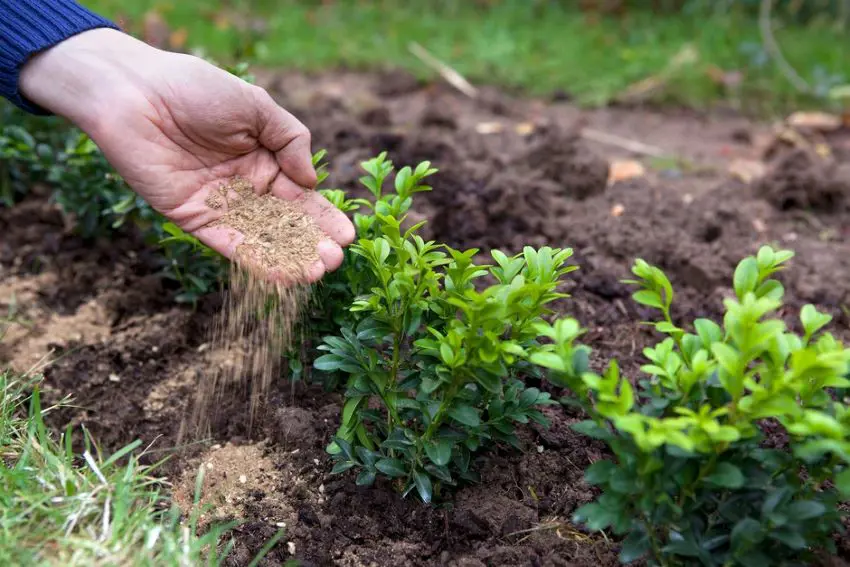
Using bone meal fertilizer correctly is crucial to maximizing its benefits for your plants. Follow these steps to effectively apply bone meal:
1. Soil Testing
Before applying bone meal, it's important to test your soil to determine its nutrient levels and pH. Bone meal is most effective in soils with a pH below 7.0, as acidic soils help with phosphorus availability.
Soil testing kits are widely available and easy to use. Alternatively, you can send a soil sample to a local extension service or agricultural lab for a more detailed analysis.
2. Application Rate
The general recommendation is to use about one tablespoon of bone meal per two square feet of soil. For individual plants, a good rule of thumb is to use about one teaspoon per plant.
However, this can vary based on the specific nutrient needs of your plants and the existing nutrient levels in your soil. Always refer to the packaging instructions for precise application rates, as different products may have varying nutrient concentrations.
3. Incorporation
Mix the bone meal thoroughly into the soil to a depth of about 3-4 inches. This ensures the nutrients are accessible to the plant roots. For new plantings, you can incorporate bone meal into the planting hole or row before setting the plants or seeds.
For established plants, carefully work the bone meal into the soil around the drip line of the plant, being careful not to disturb the roots.
4. Timing
Bone meal should be applied at the time of planting or during the growing season when plants are actively growing. It's particularly beneficial for root crops like carrots and potatoes and for flowering plants such as roses and bulbs.
For perennials, early spring application is ideal as it provides nutrients during the critical growth phase. For annuals and vegetables, apply bone meal at planting time or when transplanting seedlings.
5. Watering
After applying bone meal, water the soil well. This helps the nutrients to start breaking down and becoming available to the plants.
Consistent moisture is important, as it facilitates the microbial activity needed to release phosphorus and other nutrients from the bone meal. Be careful not to overwater, as excessively wet conditions can lead to nutrient leaching and other soil issues.
Additional Tips for Using Bone Meal
- Combining with Other Fertilizers: Since bone meal primarily provides phosphorus and calcium, it’s often beneficial to use it in combination with other fertilizers that supply nitrogen and potassium. This ensures a balanced nutrient supply for your plants.
- Mulching: After applying bone meal and watering, consider adding a layer of mulch around your plants. Mulch helps retain soil moisture, regulates temperature, and can further promote nutrient availability.
- Reapplication: Bone meal is a slow-release fertilizer, so frequent applications are not necessary. Typically, one application per growing season is sufficient. However, if you notice signs of phosphorus deficiency, such as stunted growth or poor flowering, a mid-season reapplication may be beneficial.
- Safety Precautions: Bone meal can attract pets and wildlife due to its scent. To prevent disturbances, you can mix it well into the soil and cover the area with mulch. Additionally, wear gloves and a mask when handling bone meal to avoid inhaling dust or coming into direct contact with the powder.
Benefits Of Bone Meal Fertilizer
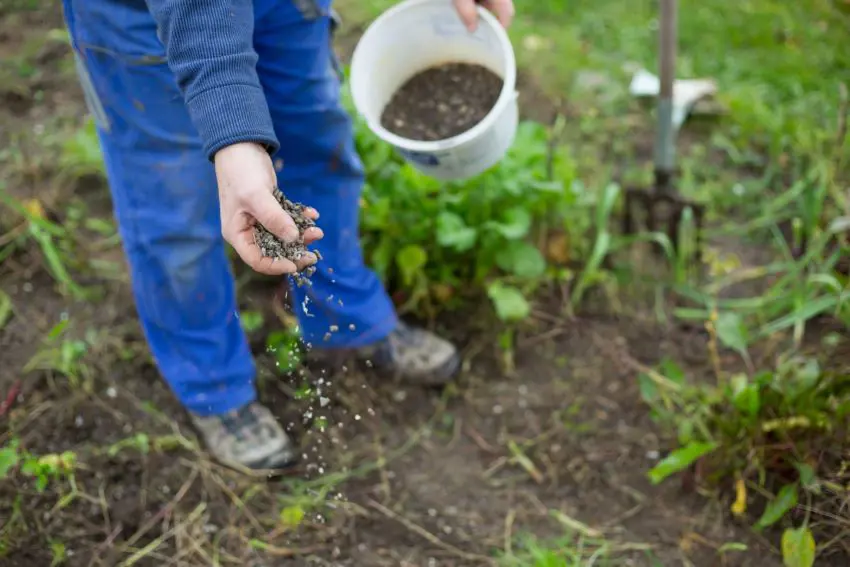
Bone meal offers numerous benefits for plants and soil health, making it a valuable addition to any gardener’s toolkit. Here are the key advantages of using bone meal fertilizer:
1. Rich Source of Phosphorus
Phosphorus is crucial for energy transfer within plants, aiding in essential processes such as photosynthesis and respiration. This nutrient promotes strong root development, enhances flowering, and supports fruiting.
Plants with adequate phosphorus grow more vigorously, produce more flowers, and yield better fruit. Bone meal provides a concentrated and easily accessible form of phosphorus, helping to meet these vital needs.
2. Calcium Boost
Calcium is essential for the structural integrity of plant cell walls, promoting strong and healthy growth. It plays a key role in various plant processes, including cell division and enzyme activity.
Adequate calcium helps prevent common issues like blossom end rot in tomatoes, peppers, and other fruiting plants. By providing a readily available source of calcium, bone meal helps ensure plants develop robust structures and remain healthy throughout their growth cycle.
3. Improved Soil Structure
Bone meal can enhance soil structure by increasing microbial activity. Soil microbes play a crucial role in breaking down organic matter, making nutrients more available to plants.
The presence of bone meal encourages the growth and activity of these beneficial microbes, leading to healthier, more fertile soil. Improved soil structure also enhances water retention, drainage, and aeration, creating a better-growing environment for plants.
4. Organic and Natural
As an organic fertilizer, bone meal is free from synthetic chemicals, making it an excellent choice for organic gardening and sustainable farming practices.
It provides a natural source of nutrients that are easily absorbed by plants without the risk of chemical buildup in the soil. Using bone meal supports environmentally-friendly gardening practices and contributes to a healthier ecosystem.
5. Slow Release
Bone meal releases nutrients slowly, providing a steady supply of phosphorus and calcium over time. This slow-release property reduces the risk of nutrient runoff and leaching, ensuring that nutrients remain in the soil where they are needed most.
The gradual availability of nutrients supports sustained plant growth, reducing the need for frequent fertilization and minimizing environmental impact.
Bone Meal Fertilizer Disadvantages
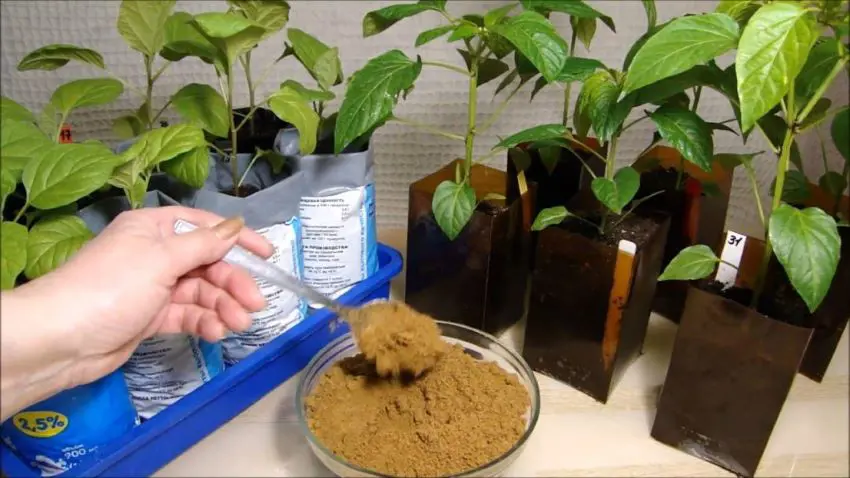
While bone meal fertilizer offers numerous benefits, it also has several drawbacks that gardeners should consider:
1. Limited Nutrient Range
Bone meal primarily provides phosphorus and calcium, with only a small amount of nitrogen. It lacks other essential nutrients like potassium, magnesium, and trace minerals, which are crucial for overall plant health.
Therefore, bone meal should be used in conjunction with other fertilizers to ensure a balanced nutrient supply. Relying solely on bone meal can lead to nutrient deficiencies, impacting plant growth and productivity.
2. Slow Release
While the slow-release nature of bone meal can be beneficial for sustained nutrient availability, it also means that bone meal is not a quick fix for immediate nutrient deficiencies.
It may take several months for the nutrients to become fully available to plants. For gardeners needing a rapid response to nutrient deficiencies, alternative fertilizers that provide immediate nutrient availability may be necessary.
3. Soil pH Dependency
Bone meal is most effective in acidic soils (pH below 7.0). In alkaline soils (pH above 7.0), phosphorus becomes less available to plants, reducing the effectiveness of bone meal.
Gardeners with alkaline soils may need to adjust the soil pH or consider alternative phosphorus sources to ensure optimal nutrient uptake. Regular soil testing is recommended to monitor and manage soil pH levels effectively.
4. Attraction to Animals
The scent of bone meal can attract pets and wildlife, potentially causing disturbances in the garden. Animals may dig up soil treated with bone meal, damaging plants and disrupting garden beds.
To mitigate this, gardeners can mix bone meal thoroughly into the soil and cover treated areas with mulch. Additionally, using bone meal in moderation and combining it with other soil amendments can reduce its attractiveness to animals.
5. Potential for Overuse
Excessive use of bone meal can lead to an imbalance of nutrients in the soil, particularly an excess of phosphorus. High phosphorus levels can inhibit the uptake of other essential nutrients like iron and zinc, leading to deficiencies.
Overuse of bone meal can also contribute to environmental issues, such as nutrient runoff and water pollution. To avoid these problems, gardeners should follow recommended application rates and consider soil testing to tailor fertilizer use to their garden's specific needs.
